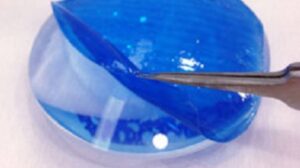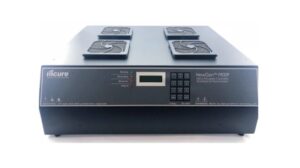Understanding the Differences
When it comes to curing materials like adhesives, inks, and coatings, two primary methods are employed: UV curing and thermal curing. Both processes solidify liquid materials into solid forms, but they utilize different mechanisms and offer distinct advantages and disadvantages. Let’s delve into the details of each method.
UV Curing: The Power of Light
UV curing, also known as photopolymerization, utilizes ultraviolet (UV) light to initiate a chemical reaction that solidifies a material. The process involves exposing a liquid or semi-liquid material to UV radiation, which triggers a polymerization reaction. This reaction forms cross-links between the molecules, transforming the material into a solid.
Key Advantages of UV Curing:
- Speed: UV curing is incredibly fast, often completing the process in a matter of seconds or even milliseconds. This is particularly beneficial in high-speed manufacturing environments.
- Energy Efficiency: Compared to thermal curing, UV curing typically consumes less energy, making it a more environmentally friendly option.
- Low VOC Emissions: UV curing materials often contain fewer volatile organic compounds (VOCs), reducing environmental pollution.
- Instantaneous Curing: The rapid curing time allows for immediate handling and processing of cured materials.
- Versatility: UV curing can be used with a wide range of materials, including inks, adhesives, coatings, and dental composites.
Common Applications of UV Curing:
- Printing (inks, coatings)
- Wood finishing
- Automotive coatings
- Medical devices
- Dental restorations
Thermal Curing: The Heat Method
Thermal curing, also known as heat curing, involves applying heat to a material to initiate a chemical reaction that solidifies it. This process is typically slower than UV curing, as it requires sufficient time for the heat to penetrate the material and trigger the curing reaction.
Key Advantages of Thermal Curing:
- Versatility: Thermal curing can be used with a wider range of materials compared to UV curing, including materials that are sensitive to UV light.
- Depth of Cure: Thermal curing can penetrate deeper into materials, making it suitable for thicker coatings or substrates.
- Temperature Control: The curing process can be precisely controlled by adjusting the temperature, allowing for customization of the material’s properties.
Common Applications of Thermal Curing:
- Paints and coatings
- Adhesives
- Composites
- Plastics
- Electronics
Choosing the Right Method: Factors to Consider
The decision between UV curing and thermal curing depends on various factors, including:
- Material Type: The specific properties of the material, such as its sensitivity to UV light and thickness, will influence the choice of curing method.
- Speed Requirements: If rapid curing is essential, UV curing is often the preferred option.
- Energy Efficiency: For applications where energy consumption is a concern, UV curing can be more advantageous.
- Environmental Impact: If reducing VOC emissions is a priority, UV curing may be a better choice.
- Equipment Cost: The initial investment in UV curing equipment may be higher than thermal curing equipment.
Conclusion
Both UV curing and thermal curing have their unique advantages and disadvantages. The optimal method for a particular application depends on a careful evaluation of the factors discussed above. By understanding the differences between these two curing processes, manufacturers can make informed decisions to select the most suitable method for their specific needs.



